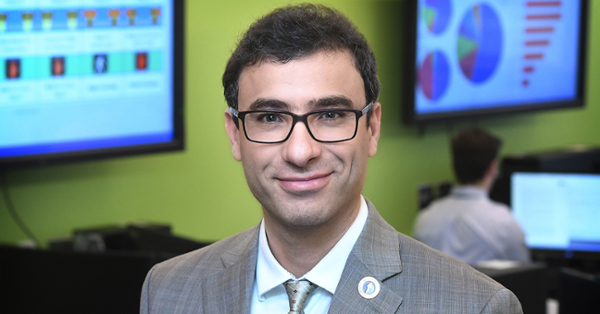Righting wrong-way crashes in New Jersey
Righting wrong-way crashes in New Jersey

Wrong-way driving crashes—where a motorist who is driving on the wrong side of traffic collides with another vehicle—are among the deadliest types of auto crashes. New Jersey ranks among the top 15 states with the highest number of wrong-way fatalities.
In order to reduce these crashes, the U.S. Department Of Transportation awarded a $2 million Strengthening Mobility and Revolutionizing Transportation (SMART) grant to the New Jersey Department of Transportation (NJDOT) to study wrong-way driving incidents and prototype wrong-way driving systems in New Jersey. Rowan University is part of the research team led by AtkinsRéalis USA, Inc.
Under the direction of Mohammad Jalayer, Ph.D., an associate professor in the Department of Civil & Environmental Engineering in the Henry M. Rowan College of Engineering, Rowan’s team will use data analytics tools to evaluate and verify the effectiveness of at least two wrong-way driving Intelligent Transportation Systems (ITS) systems installed in New Jersey. Such systems integrate advanced communication technologies into vehicles and existing infrastructure. They include electronic toll collection, traffic signal coordination and traveler information systems.
There are a number of strategies that could be used to help combat wrong-way driving, Jalayer noted. These include signage such as flashing light emitting diode (LED) lights and ITS-based systems that can detect wrong-way driving and also connect with traffic management centers. These systems can also connect with dynamic message signs that are installed over highways and display real-time messages.
“If there is a wrong-way incident detected, then that message can be displayed to nearby drivers,” said Jalayer, associate director and manager of the ITS division at Rowan’s Center for Research & Education in Advanced Transportation Engineering Systems. “The sign can provide some instructions for drivers to quickly stop and pull over their cars.”
The project’s goal is to reduce the number of wrong-way crashes and incidents in support of NJDOT’s commitment to eliminating roadway fatalities through a “Safe Systems” approach, which prioritizes safety. The initiative aims to establish a robust foundation for scaling the appropriate technology for future widespread statewide implementation, moving the NJDOT closer to achieving its “toward zero deaths” goal.
“Historically, we see that underserved communities are more prone to experiencing traffic crashes,” Jalayer said. “Our objective is to ensure safety and equity for all.”